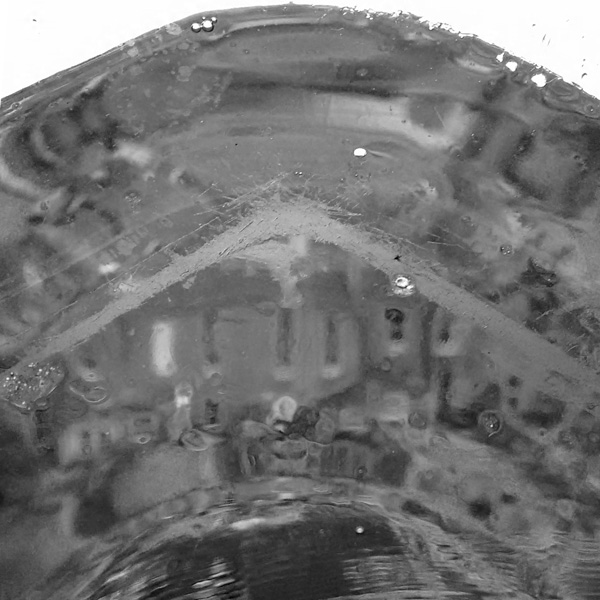A hectograph is a print made using a gelatin plate. Traditionally the “jellygraph” was used to make short run copies – such as school class tests – but now it is used to make art mono-prints and background papers with modern acrylics.
To make a plate you will need :
-
- a suitable plastic, metal or glass pan to set the plate in. (~250x250mm or similar to achieve 20mm depth)
- a heatproof jug or pan (for boiling water and mixing).
- a measuring jug.
- 400ml water
- 400ml glycerol (available in larger pharmacies ~ £3)
- 60g gelatin powder (5 sachets)
- optional – 15ml concentrated anti bacterial cleaner (optional – to prolong the plates working life by preventing moulds).
- optional – 2 sheets of smooth plastic (such as acetate sheets) or store in original mould.

The set plate in a pyrex dish.
Boil the water and add the gelatin, stirring until smooth. Add the other ingredients and mix well. Pour into the pan mould and skim any bubbles from the surface using a scrap of clean paper. Allow the plate to cool and set before turning out onto a sheet of plastic. Store the plate between 2 sheets of plastic to prevent the surface becoming damaged. If, after printing, the surface becomes too damaged to use it can be remoulded by melting.

First test print – fresia.
There are numerous articles on-line about how to make and use hectographs – here is one from 1913 and a video of how the process would have worked in the 1940s.
UPDATE: July 2017 and the plate is still usable!